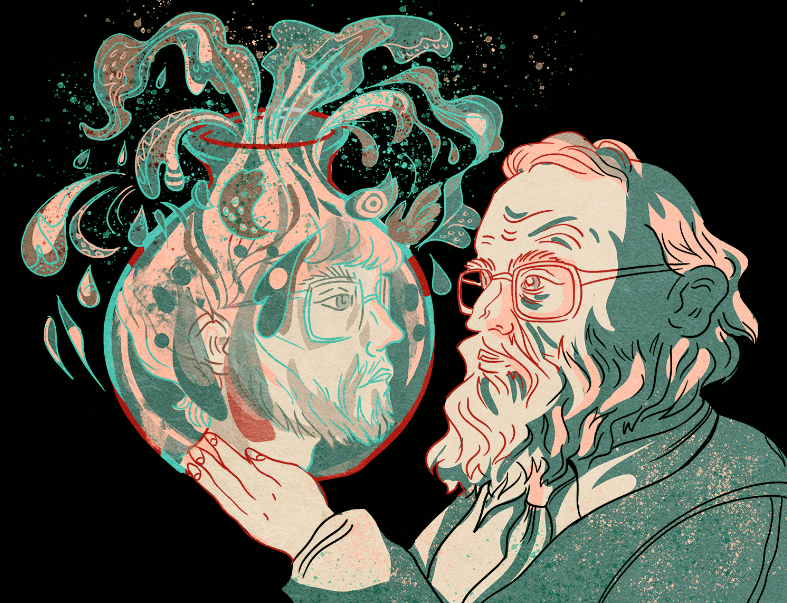Montreal community members crowded into the Redpath Museum Auditorium on Sept. 27 for a Freaky Friday lecture. In the talk, Professor Joe Schwarcz, Director of the McGill Office for Science and Society, discussed humanity’s historical attempts to delay aging.
“Nobody looks forward to getting old,” Schwarcz said. “Historically, there has been this search for the Fountain of Youth, and, over the years, many anti-aging regimens have been developed.”
One such regimen consisted of bathing in sour donkey milk and was practiced by Queen Cleopatra in the first century BC. Modern science suggests that, since sour milk contains lactic acid, the remedy could have had a slight rejuvenating effect. Lactic acid belongs to a class of compounds called alpha hydroxy acids (AHAs) that speed up the turnover of skin cells and are now marketed in cosmetic face creams.
In the 19th century, physiologist Charles Brown-Séquard observed that eunuchs suffered from medical problems and hypothesized that a substance present in the testes was the key to health and longevity. He injected himself with extracts from dog testes, inspiring other researchers to further investigate gland transplants.
This tradition continued into the early 20th century when John Brinkley, a charlatan without medical credentials, made a fortune by transplanting the testicles of goats into the scrota of aging men.
“He had very few complications because he never connected the goat testicles to anything, but he had plenty of men saying how happy they were, […] undoubtedly due to the placebo effect,” Schwarcz said. “Although we look back on these ventures as being virtually comical, […] this really was the beginning of hormonal therapy.”
Attempts to exploit the gullibility of the public persisted, even as legitimate science advanced. Human growth hormone (HGH), the production of which declines as a person ages, became a widely promoted remedy after a 1990 study observed that HGH treatments increased lean mass and bone density in elderly men.
“HGH, at the time, was very difficult to come by,” Schwarcz said. “But there were clinics that popped up […] that were offering HGH injections for much less than [the expected price], so no one knows what they were actually injecting.”
When public awareness caught up, companies instead began marketing an HGH ‘secretagogue,’ a substance that supposedly stimulates the secretion of raw materials to form HGH proteins inside the body. However, HGH levels decline because of the reduced activity of enzymes that assemble raw materials into proteins, not because of a shortage of raw materials.
“Supplying these secretagogues is like supplying bricks and windows and doors and hoping that they will assemble themselves into a building, which will not happen because the builder is missing,” Schwarcz said.
Schwarcz also noted that the manipulative tactics of advertisers are present in many modern anti-aging products.
“Marketing very often uses clever words such as ‘It may help’ […] and, as soon as you do that, you are protected legally,” Schwarcz said.
Some companies push this principle above and beyond. Based in Arizona, the Alcor Life Extension Foundation specializes in cryonics, a pseudoscience that insists on freezing human corpses in the hope of resurrecting them in the future.
“It [costs] at least $100,000,” Schwarcz said. “This is of course nonsense. When you are cold and dead, you are dead.”
While some make expensive bets on futuristic technologies, Schwarcz’s recommendations for prolonging life are a lot less flashy. Okinawa Island in Japan is home to more centenarians than any other place in the world. The lifestyle of this population is characterized by a high consumption of fish, vegetables, and fruit, a low consumption of red meat and processed food, and high levels of activity.
“Eating a proper balanced diet, […] exercise, and [genetics] are a few keys, but these are not highly marketable,” Schwarcz said. “There constantly are these miracle solutions, but there are no miracles.”










Important points in this article that we should be aware of. This would be a huge help. Thanks for notching.